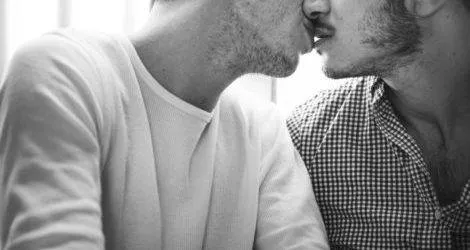
To Suffer or To Disappear: The State of Queer Literary Fiction
In May of 2015, Garth Greenwell declared that the Great Gay Novel had arrived: Hanya Yanagihara’s A Little Life. (For my money, Greenwell’s own book, What Belongs to You, is a much stronger contender for that title.) Greenwell attributes the creative success of Yanagihara’s novel, which is certainly not A Little Book, to the way in which the novel equates queerness with exaggeration: “To understand the novel’s exaggeration and its intense, claustrophobic focus on its characters’ inner lives requires recognizing how it engages with aesthetic modes long coded as queer: melodrama, sentimental fiction, grand opera.”
In the same paragraph, Greenwell goes on to enumerate some of the descriptions Yanagihara uses to convey the protagonist’s sentimental and grand inner turmoil: “he is ‘a scrap of bloodied, muddied cloth,’ ‘a blank, faceless prairie under whose yellow surface earthworms and beetles wriggled,’ ‘a scooped out husk.’ His memories are ‘hyenas,’ his fear ‘a flock of flapping bats,’ his self-hatred a ‘beast.’”
At the risk of spoiling this gargantuan bummer of a book, I want to summarize the main through-line of the novel in order to illustrate the extent to which unwavering suffering equals queer representation. Jude, the main character, a lawyer in his forties, enters into a relationship with a man who is disgusted by his physical appearance. This man eventually rapes and later stalks Jude. We are then treated to extended flashback in which we learn that Jude was repeatedly raped and forced into sex work from a very young age. As the years go on, Jude cuts and burns himself and attempts suicide multiple times. He can’t have sex normally, and so his presence in the novel is one of a sexless, tortured ghost. The novel ends with Jude finally (finally!) killing himself.
This is the Great Gay Novel? The book is both widely acclaimed and an immense commercial success. What does it say about the state of queer fiction that its biggest success is a book written by a straight woman that essentially suggests gay men can either be yuppies or victims of sexual abuse—or you know, both. There seems to be no in between when it comes to queer characters, male or female. We’re either just like them or we suffer greatly because we’re not like them.
Lesbian fiction is certainly not immune to this. Two of the most successful books to feature queer female protagonists from the past two years—“success” here meaning buzz and frequency of appearance on “best of” lists—were Chinelo Okparanta’s Under The Udala Trees and Nicole Dennis-Benn’s Here Come the Sun. While both of these books are beautiful and vital, and while I’m beyond thrilled that books by and about queer women are lauded, their success is representative of a trend in which, to be taken seriously, queer women need to endure life-threatening pain.
The plight of queer women in literary fiction reminds me of Kara Brown’s essential and incisive Jezebel piece, “I’m So Damn Tired of Slave Movies.” “I’m tired of watching black people go through some of the worst pain in human history for entertainment,” Brown writes, “and I’m tired of white audiences falling over themselves to praise a film that has the courage and honesty to tell such a brutal story [author’s own emphases]. When movies about slavery or, more broadly, other types of violence against black people are the only types of films regularly deemed “important” and “good” by white people, you wonder if white audiences are only capable of lauding a story where black people are subservient.” Audiences seem to really enjoy witnessing minorities suffer, and enjoy perhaps even more the chance to pat themselves on the back for not being as racist or homophobic as the people inflicting that suffering.
If queer characters aren’t suffering, they’re straight-washed until their queerness almost disappears. Another largely successful book from last year to feature a queer female protagonist is Emma Straub’s Modern Lovers, a breezy book about former-hipsters-turned-parents. Straub’s lesbian couple reminds me of the central couple on The Fosters: a biracial, chaste-but-passionate-about-family coupling whose existence in the story seems relegated to parenting the straight teenager whom the story is really about. It’s nice to see lesbian couples just existing normally, not being emotionally or physically persecuted for their difference, but it’s also kind of unnerving to witness a lesbian couple not questioning the family-centric paradigm at all. The degree to which straight audiences tolerate queer characters seems equal to either how much the queer character resembles them or how much the queer character suffers.










